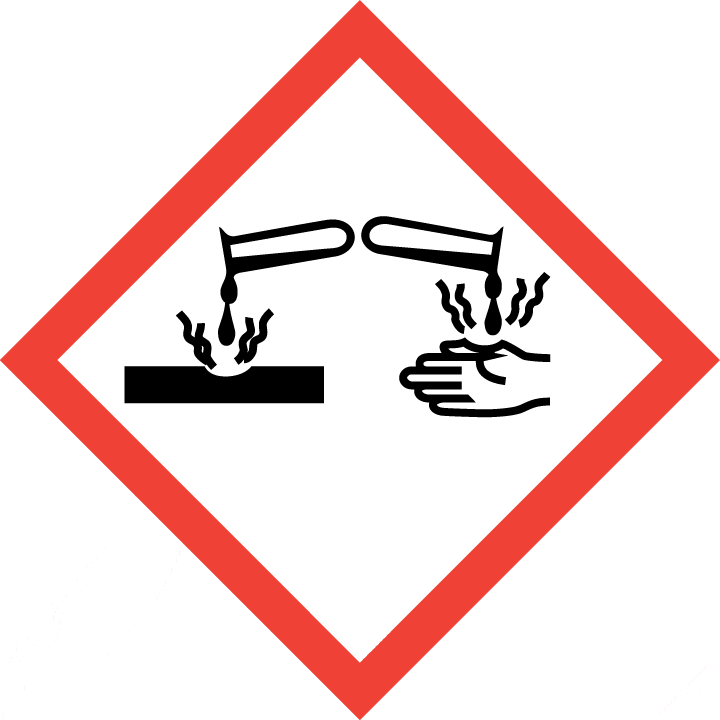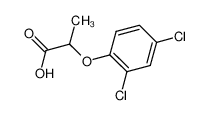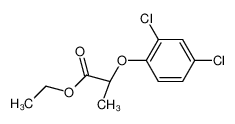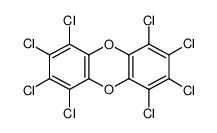| Product name | 2-(2,4-dichlorophenoxy)propanoic acid |
|---|
| Product number | - |
|---|---|
| Other names | Propanoic acid, 2-(2,4-dichlorophenoxy)- |
| Identified uses | For industry use only. |
|---|---|
| Uses advised against | no data available |
| Company | MOLBASE (Shanghai) Biotechnology Co., Ltd. |
|---|---|
| Address | Floor 4 & 5, Building 12, No. 1001 North Qinzhou Road, Xuhui District, Shanghai, China |
| Telephone | +86(21)64956998 |
| Fax | +86(21)54365166 |
| Emergency phone number | +86-400-6021-666 |
|---|---|
| Service hours | Monday to Friday, 9am-5pm (Standard time zone: UTC/GMT +8 hours). |
Acute toxicity - Oral, Category 4
Acute toxicity - Dermal, Category 4
Skin irritation, Category 2
Serious eye damage, Category 1
2.2 GHS label elements, including precautionary statements| Pictogram(s) |   |
|---|---|
| Signal word | Danger |
| Hazard statement(s) | H302 Harmful if swallowed H312 Harmful in contact with skin H315 Causes skin irritation H318 Causes serious eye damage |
| Precautionary statement(s) | |
| Prevention | P264 Wash ... thoroughly after handling. P270 Do not eat, drink or smoke when using this product. P280 Wear protective gloves/protective clothing/eye protection/face protection. |
| Response | P301+P312 IF SWALLOWED: Call a POISON CENTER/doctor/…if you feel unwell. P330 Rinse mouth. P302+P352 IF ON SKIN: Wash with plenty of water/... P312 Call a POISON CENTER/doctor/…if you feel unwell. P321 Specific treatment (see ... on this label). P362+P364 Take off contaminated clothing and wash it before reuse. P332+P313 If skin irritation occurs: Get medical advice/attention. P305+P351+P338 IF IN EYES: Rinse cautiously with water for several minutes. Remove contact lenses, if present and easy to do. Continue rinsing. P310 Immediately call a POISON CENTER/doctor/… |
| Storage | none |
| Disposal | P501 Dispose of contents/container to ... |
none
3.Composition/information on ingredients 3.1 Substances| Chemical name | Common names and synonyms | CAS number | EC number | Concentration |
|---|---|---|---|---|
| 2-(2,4-dichlorophenoxy)propanoic acid | 2-(2,4-dichlorophenoxy)propanoic acid | 120-36-5 | none | 100% |
Consult a physician. Show this safety data sheet to the doctor in attendance.
If inhaledFresh air, rest. Seek medical attention if you feel unwell.
In case of skin contactRemove contaminated clothes. Rinse and then wash skin with water and soap. Refer for medical attention if skin irritation occurs.
In case of eye contactRinse with plenty of water for several minutes (remove contact lenses if easily possible). Refer immediately for medical attention.
If swallowedRinse mouth. Give one or two glasses of water to drink. Refer immediately for medical attention.
4.2 Most important symptoms/effects, acute and delayedno data available
4.3 Indication of immediate medical attention and special treatment needed, if necessary Absorption, Distribution and ExcretionDermal absorption can occur on prolonged contact of the soln with the skin ... .
5.Fire-fighting measures 5.1 Extinguishing media Suitable extinguishing mediaIn case of fire in the surroundings, use appropriate extinguishing media.
5.2 Specific hazards arising from the chemicalno data available
5.3 Special protective actions for fire-fightersWear self-contained breathing apparatus for firefighting if necessary.
6.Accidental release measures 6.1 Personal precautions, protective equipment and emergency proceduresUse personal protective equipment. Avoid dust formation. Avoid breathing vapours, mist or gas. Ensure adequate ventilation. Evacuate personnel to safe areas. Avoid breathing dust. For personal protection see section 8.
6.2 Environmental precautionsPersonal protection: particulate filter respirator adapted to the airborne concentration of the substance. Do NOT let this chemical enter the environment. Sweep spilled substance into sealable containers. If appropriate, moisten first to prevent dusting. Carefully collect remainder. Then store and dispose of according to local regulations.
6.3 Methods and materials for containment and cleaning upDo not discharge effluent containing this product into lakes, streams, ponds, estuaries, oceans, or other waters unless in accordance with the requirements of a National Pollution Discharge Elimination System (NPDES) permit and the permitting authority has been notified in writing prior to discharge. Do not discharge effluent containing this product to sewer systems without previously notifying the local sewage treatment plant authority. For guidance contact your State Water Board or Regional Office of the EPA. /Dichlorprop-p/
7.Handling and storage 7.1 Precautions for safe handlingAvoid contact with skin and eyes. Avoid formation of dust and aerosols. Avoid exposure - obtain special instructions before use.Provide appropriate exhaust ventilation at places where dust is formed. For precautions see section 2.2.
7.2 Conditions for safe storage, including any incompatibilitiesProvision to contain effluent from fire extinguishing. Store in an area without drain or sewer access. Separated from food and feedstuffs.If stored below freezing, /it/ may be necessary to warm to 40 deg F and agitate before using.
8.Exposure controls/personal protection 8.1 Control parameters Occupational Exposure limit valuesno data available
Biological limit valuesno data available
8.2 Appropriate engineering controlsHandle in accordance with good industrial hygiene and safety practice. Wash hands before breaks and at the end of workday.
8.3 Individual protection measures, such as personal protective equipment (PPE) Eye/face protectionSafety glasses with side-shields conforming to EN166. Use equipment for eye protection tested and approved under appropriate government standards such as NIOSH (US) or EN 166(EU).
Skin protectionWear impervious clothing. The type of protective equipment must be selected according to the concentration and amount of the dangerous substance at the specific workplace. Handle with gloves. Gloves must be inspected prior to use. Use proper glove removal technique(without touching glove's outer surface) to avoid skin contact with this product. Dispose of contaminated gloves after use in accordance with applicable laws and good laboratory practices. Wash and dry hands. The selected protective gloves have to satisfy the specifications of EU Directive 89/686/EEC and the standard EN 374 derived from it.
Respiratory protectionWear dust mask when handling large quantities.
Thermal hazardsno data available
9.Physical and chemical properties| Physical state | Yellowish to colorless solid |
|---|---|
| Colour | Colorless crystals |
| Odour | ODORLESS |
| Melting point/ freezing point | 110-112ºC |
| Boiling point or initial boiling point and boiling range | 348.3ºC at 760mmHg |
| Flammability | Combustible. Liquid formulations containing organic solvents may be flammable. Gives off irritating or toxic fumes (or gases) in a fire. |
| Lower and upper explosion limit / flammability limit | no data available |
| Flash point | 164.5ºC |
| Auto-ignition temperature | no data available |
| Decomposition temperature | no data available |
| pH | no data available |
| Kinematic viscosity | no data available |
| Solubility | In acetone 595, isopropanol 510, benzene 85, toluene 69, xylene 51, kerosene 2.1 (all in g/L, 20°C). |
| Partition coefficient n-octanol/water (log value) | log Kow = 3.43 |
| Vapour pressure | 1.9E-05mmHg at 25°C |
| Density and/or relative density | 1.421g/cm3 |
| Relative vapour density | no data available |
| Particle characteristics | no data available |
no data available
10.2 Chemical stabilitySTABLE TO HEAT, & RESISTANT TO REDUCTION, HYDROLYSIS & ATMOSPHERIC OXIDATION.
10.3 Possibility of hazardous reactions2,4-DP is an organic acid. Neutralizes bases in exothermic reactions.
10.4 Conditions to avoidno data available
10.5 Incompatible materialsno data available
10.6 Hazardous decomposition productsWhen heated to decomposition it emits toxic chloride fumes.
11.Toxicological information Acute toxicity- Oral: LD50 Rat oral 800 mg/kg
- Inhalation: LC50 Rat inhalation >0.65 mg/l air/4 hr
- Dermal: LD50 Mouse percutaneous 1400 mg/kg
no data available
Serious eye damage/irritationno data available
Respiratory or skin sensitizationno data available
Germ cell mutagenicityno data available
Carcinogenicityno data available
Reproductive toxicityno data available
STOT-single exposureno data available
STOT-repeated exposureno data available
Aspiration hazardno data available
12.Ecological information 12.1 Toxicity- Toxicity to fish: LC50 /Lepomis macrochirus/ (Bluegill sunfish) 165 mg/L/48 hr /Conditions of bioassay not specified/ /Dichlorprop dimethylammonium salt
- Toxicity to daphnia and other aquatic invertebrates: EC50; Species: Daphnia magna (Water flea, age <24 hr); Conditions: freshwater, static; Concentration: 5400 ug/L for 48 hr (confidence interval: 4400-6800 ug/L); Effect: intoxication, immobilization /purity 23.6%
- Toxicity to algae: EC50; Species: Pseudokirchneriella subcapitata (Green algae, free culture, age 5 days, 1X10+4 cells/mL); Conditions: freshwater, static, 22°C; Concentration: 190 mg/L for 4 days; Effect: decreased population growth rate
- Toxicity to microorganisms: no data available
AEROBIC: Using a soil inoculum in a laboratory experiment, the time to complete disappearance under the influence of UV at 283 mu was greater than 205 days using concentrations of 50, 50, and 80 ppm dichlorprop added to 3 soils(1). Dichlorprop had half-lives of 10, 38, and 4 days in soil from Hole (sandy loam), Kroer (loam), and Froland (highly decomposed organic), Norway, respectively(2). Dichlorprop was not degraded in by soil bacterium after 28 days with a starting concn of 50 ug/mL and incubated at 30°C(3). No degradation of dichlorprop was found after 45 days in Lanna clay(4). The half-life for the R and S isomers for dichlorprop in soil are reported as 8.7 and 4.4 days, respectively, and it degrades completely in 31 days with biological mediated degradation(5). The calculated half-lives of the R and S isomers of dichlorprop for 0-15 day incubation are 21.9 and 7.1 days, at 16-35 days incubation, 4.6 to 3.9 days, and for 52 days incubation, 6.0 and 6.8 days using garden soil at pH 7.0 and 1.6% organic carbon(6). Dichlorprop had a half-life of 5 days in soil from Vienna, Austria incubated at 21°C for 32 days(7). Dichlorprop was shown to degrade rapidly in soil after a lag period; the lag period decreased with repeated application, and the degradation rate increased with increased pH(8). In soil, metabolism involves degradation of the side-chain to 2,4-dichlorophenol, ring hydroxylation, and subsequent ring opening(9). Dichlorprop was degraded in an aerobic aquatic study at 1.6 ug/L/day after a 31 day lag and at 2.0 ug/L/day after a 21 day lag period(10). Dichlorprop was degraded aerobically after acclimation in a sandy aquifer in 5 months(11). Dichlorprop was rapidly degraded in 14 days in an aerobic limestone aquifer after a 4 day lag period(12). Dichlorprop was microbially degraded in Danish aquifers in 124 days with a lag time of at least 62 days(13).
12.3 Bioaccumulative potentialAn estimated BCF of 3 was calculated in fish for dichlorprop(SRC), using a log Kow of 3.43(1) and a regression-derived equation(2). The bioconcentration factor for dichlorprop was also estimated as 23(3). According to a classification scheme(4), these BCFs suggest the potential for bioconcentration in aquatic organisms is low(SRC).
12.4 Mobility in soilKoc values for dichlorprop were experimentally determined to be 50-62 in three soils ranging from pH 5-5.3(1). Koc values of 113 and 118 were determined in soils at respective pHs of 4.4 and 4.1(1). Koc values have also been measured as 34-129(2) and 36.6-60(3). According to a classification scheme(4), these Koc values suggest that dichlorprop is expected to have very high to high mobility in soil. The pKa of dichlorprop is 3.1(5), indicating that this compound will exist almost entirely in anion form in the environment and anions generally do not adsorb more strongly to soils containing organic carbon and clay than their neutral counterparts(6). Dichlorprop has a pesticide leaching potential of 49 when used as a foliar applicant(7).
12.5 Other adverse effectsno data available
13.Disposal considerations 13.1 Disposal methods ProductThe material can be disposed of by removal to a licensed chemical destruction plant or by controlled incineration with flue gas scrubbing. Do not contaminate water, foodstuffs, feed or seed by storage or disposal. Do not discharge to sewer systems.
Contaminated packagingContainers can be triply rinsed (or equivalent) and offered for recycling or reconditioning. Alternatively, the packaging can be punctured to make it unusable for other purposes and then be disposed of in a sanitary landfill. Controlled incineration with flue gas scrubbing is possible for combustible packaging materials.
14.Transport information 14.1 UN Number| ADR/RID: no data available | IMDG: no data available | IATA: no data available |
| ADR/RID: no data available |
| IMDG: no data available |
| IATA: no data available |
| ADR/RID: no data available | IMDG: no data available | IATA: no data available |
| ADR/RID: no data available | IMDG: no data available | IATA: no data available |
| ADR/RID: no | IMDG: no | IATA: no |
no data available
14.7 Transport in bulk according to Annex II of MARPOL 73/78 and the IBC Codeno data available
15.Regulatory information 15.1 Safety, health and environmental regulations specific for the product in question| Chemical name | Common names and synonyms | CAS number | EC number |
|---|---|---|---|
| 2-(2,4-dichlorophenoxy)propanoic acid | 2-(2,4-dichlorophenoxy)propanoic acid | 120-36-5 | none |
| European Inventory of Existing Commercial Chemical Substances (EINECS) | Listed. | ||
| EC Inventory | Listed. | ||
| United States Toxic Substances Control Act (TSCA) Inventory | Listed. | ||
| China Catalog of Hazardous chemicals 2015 | Listed. | ||
| New Zealand Inventory of Chemicals (NZIoC) | Listed. | ||
| Philippines Inventory of Chemicals and Chemical Substances (PICCS) | Not Listed. | ||
| Vietnam National Chemical Inventory | Not Listed. | ||
| Chinese Chemical Inventory of Existing Chemical Substances (China IECSC) | Not Listed. | ||
| Creation Date | Aug 19, 2017 |
|---|---|
| Revision Date | Aug 19, 2017 |
- CAS: Chemical Abstracts Service
- ADR: European Agreement concerning the International Carriage of Dangerous Goods by Road
- RID: Regulation concerning the International Carriage of Dangerous Goods by Rail
- IMDG: International Maritime Dangerous Goods
- IATA: International Air Transportation Association
- TWA: Time Weighted Average
- STEL: Short term exposure limit
- LC50: Lethal Concentration 50%
- LD50: Lethal Dose 50%
- EC50: Effective Concentration 50%
- IPCS - The International Chemical Safety Cards (ICSC), website: http://www.ilo.org/dyn/icsc/showcard.home
- HSDB - Hazardous Substances Data Bank, website: https://toxnet.nlm.nih.gov/newtoxnet/hsdb.htm
- IARC - International Agency for Research on Cancer, website: http://www.iarc.fr/
- eChemPortal - The Global Portal to Information on Chemical Substances by OECD, website: http://www.echemportal.org/echemportal/index?pageID=0&request_locale=en
- CAMEO Chemicals, website: http://cameochemicals.noaa.gov/search/simple
- ChemIDplus, website: http://chem.sis.nlm.nih.gov/chemidplus/chemidlite.jsp
- ERG - Emergency Response Guidebook by U.S. Department of Transportation, website: http://www.phmsa.dot.gov/hazmat/library/erg
- Germany GESTIS-database on hazard substance, website: http://www.dguv.de/ifa/gestis/gestis-stoffdatenbank/index-2.jsp
- ECHA - European Chemicals Agency, website: https://echa.europa.eu/




























